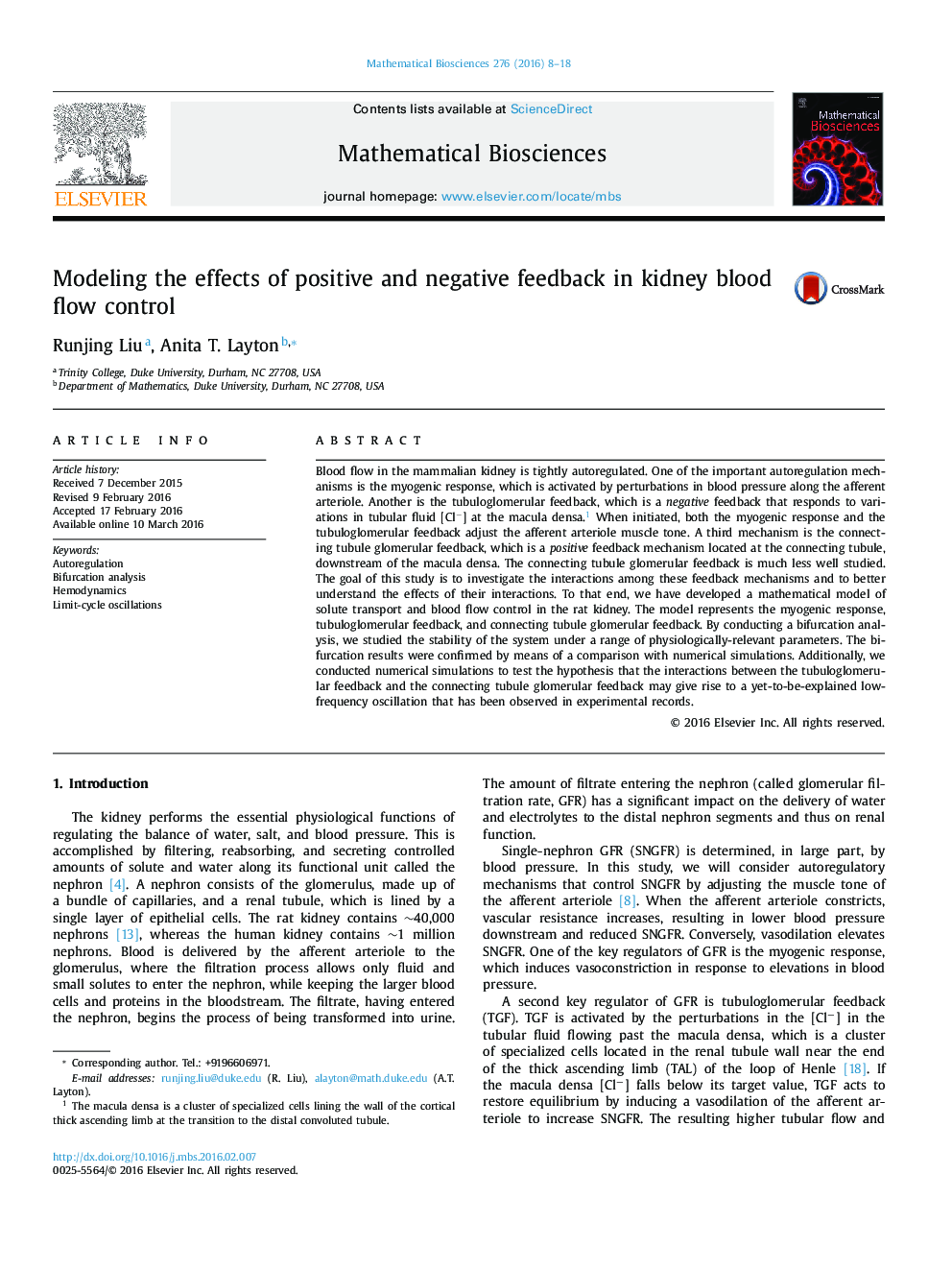| Article ID | Journal | Published Year | Pages | File Type |
|---|---|---|---|---|
| 4499834 | Mathematical Biosciences | 2016 | 11 Pages |
•A mathematical model is developed and presented that represents both the positive and negative feedback mechanisms in blood flow control in the rat kidney.•The model is used to investigate the interactions among the different types of feedback mechanisms and to understand the effects of those interactions.•A bifurcation analysis is conducted to study the stability of the system.•Model results partially support the hypothesis that the interactions between the positive and negative feedback mechanisms may give rise to a yet-to-be-explained low-frequency oscillation seen in experimental records.
Blood flow in the mammalian kidney is tightly autoregulated. One of the important autoregulation mechanisms is the myogenic response, which is activated by perturbations in blood pressure along the afferent arteriole. Another is the tubuloglomerular feedback, which is a negative feedback that responds to variations in tubular fluid [Cl−−] at the macula densa.1 When initiated, both the myogenic response and the tubuloglomerular feedback adjust the afferent arteriole muscle tone. A third mechanism is the connecting tubule glomerular feedback, which is a positive feedback mechanism located at the connecting tubule, downstream of the macula densa. The connecting tubule glomerular feedback is much less well studied. The goal of this study is to investigate the interactions among these feedback mechanisms and to better understand the effects of their interactions. To that end, we have developed a mathematical model of solute transport and blood flow control in the rat kidney. The model represents the myogenic response, tubuloglomerular feedback, and connecting tubule glomerular feedback. By conducting a bifurcation analysis, we studied the stability of the system under a range of physiologically-relevant parameters. The bifurcation results were confirmed by means of a comparison with numerical simulations. Additionally, we conducted numerical simulations to test the hypothesis that the interactions between the tubuloglomerular feedback and the connecting tubule glomerular feedback may give rise to a yet-to-be-explained low-frequency oscillation that has been observed in experimental records.
